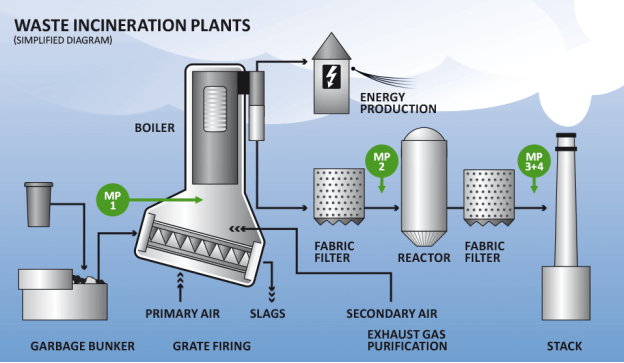MoreGreen is an establishment that runs various waste to energy facilities since the year 2015. Waste to Energy is a process of generating energy by treating waste substances. Conversion of waste to energy is a technology that was established several years ago as a means of responsibly disposing of garbage. Over the years, the industry has continued to evolve with the development of new technologies. The energy that is produced in the process of waste to energy is usable and can be applied in a variety of industries. One of the methods of converting waste into energy is incineration. In this post, we seek to understand the process of incineration.
What is incineration?
Incineration is a method of waste treatment. It is a thermal treatment method that involves the combustion of organic substances. Thermal treatment technologies are methods through which energy is produced from waste substances using heat. In the process of incineration, waste products are heated to produce ash, fuel gas, and heat.
The process of incineration
The first step in the process of waste incineration is the storage and preparation of the waste. This is where organic wastes are collected and stored in storage chambers where they are prepared for feeding into the incineration machine. The step that comes next is combustion. Combustion is where the wastes are heated at very high temperatures. The end products of combustion are hot gases and ash residues. The ash residues are separated from the other products and disposed of in landfills or pits depending on the plant’s waste disposal mechanism.
Once the hot gases produced in the combustion chamber are extracted from the chamber, the temperatures in the incineration machine are reduced. This process is called heat generation. Heat generation is a process through which heat is recovered from the hot gases. Once the gases are cooled, they are passed through a treatment chamber. The gases get into the chamber through induced draft fans or stacks. Once the gases are treated, they are collected and utilized.
Types of incineration plants
Below are some conventional methods of incineration;
Burn pile- this is the simplest method of incineration. It is where garbage or waste is collected and stacked up in a heap then set on fire. The end products here are not collected to be reused.
Burn barrel- this method is almost similar to the first one. It, however, involves a barrel in which the waste is collected then burnt. The barrel aims to keep the burning material from spreading as a result of wind and other elements.
Moving grate- This method involves a moving grate incinerator is used. This is a more complex mode of incineration used in municipal waste disposal plants.
Bottom Line
There are advantages and disadvantages of incineration. One of the benefits of combustion is that it helps in the disposal of toxic waste products. It also helps in the production of usable heat from waste materials. It is, therefore, a method of conserving the environment through proper waste disposal. On the other hand, the technique is very costly, and scientists have not found a way to dispose of the resulting ash safely.
